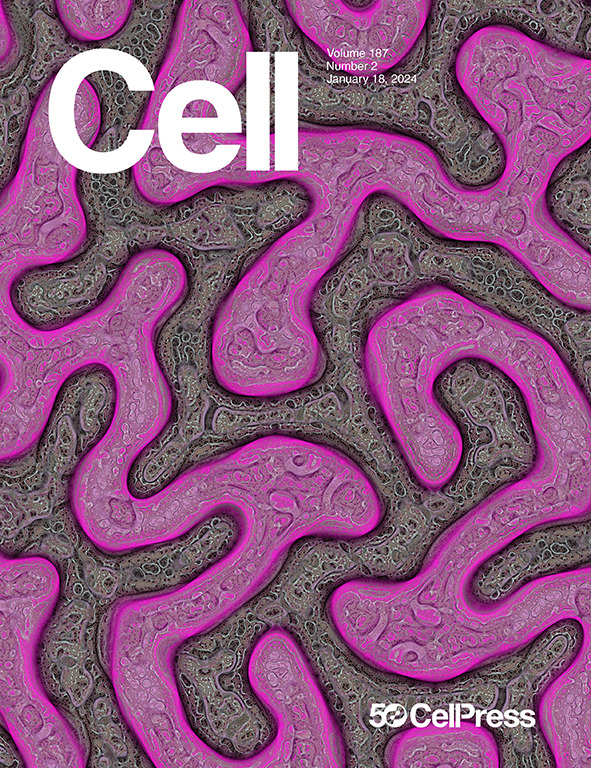An alternate receptor for adeno-associated viruses
IF 45.5
1区 生物学
Q1 BIOCHEMISTRY & MOLECULAR BIOLOGY
引用次数: 0
Abstract
Systemic gene therapy using adeno-associated virus (AAV) vectors is approved for the treatment of several genetic disorders, but challenges and toxicities associated with high vector doses remain. We report an alternate receptor for AAV (AAVR2, carboxypeptidase D [CPD]), which is distinct from the multi-serotype AAV receptor (AAVR). AAVR2 enables the transduction of clade E AAVs, including AAV8, and determines an exclusive AAVR-independent transduction pathway for AAV11 and AAV12. We characterized direct binding between the AAV8 capsid and AAVR2 by cryo-electron microscopy (cryo-EM) and identified contact residues. We observed that AAV8 directly binds to the carboxypeptidase-like domain 1 of AAVR2 via its variable region VIII and demonstrated that AAV capsids that lack AAVR2 binding can be bioengineered to engage with AAVR2. Finally, we overexpressed a minimal functional AAVR2 to enhance AAV transduction in vivo. Our study provides insights into AAV biology and clinically deployable solutions to reduce dose-related toxicities associated with AAV vectors.

腺相关病毒的替代受体
使用腺相关病毒(AAV)载体进行全身基因治疗已被批准用于治疗几种遗传性疾病,但与高剂量载体相关的挑战和毒性仍然存在。我们报道了一种不同于多血清型AAV受体(AAVR)的AAV替代受体(AAVR2,羧基肽酶D [CPD])。AAVR2使包括AAV8在内的进化系AAVs能够转导,并确定了AAV11和AAV12的独立于aavr的转导途径。我们通过低温电镜(cryo-EM)表征了AAV8衣壳与AAVR2之间的直接结合,并鉴定了接触残留物。我们观察到AAV8通过其可变区VIII直接与AAVR2的羧基肽酶样结构域1结合,并证明缺乏AAVR2结合的AAV衣壳可以通过生物工程与AAVR2结合。最后,我们过表达一个最小功能的AAVR2来增强AAV在体内的转导。我们的研究提供了对AAV生物学的见解和临床可部署的解决方案,以减少与AAV载体相关的剂量相关毒性。
本文章由计算机程序翻译,如有差异,请以英文原文为准。
求助全文
约1分钟内获得全文
求助全文
来源期刊

Cell
生物-生化与分子生物学
CiteScore
110.00
自引率
0.80%
发文量
396
审稿时长
2 months
期刊介绍:
Cells is an international, peer-reviewed, open access journal that focuses on cell biology, molecular biology, and biophysics. It is affiliated with several societies, including the Spanish Society for Biochemistry and Molecular Biology (SEBBM), Nordic Autophagy Society (NAS), Spanish Society of Hematology and Hemotherapy (SEHH), and Society for Regenerative Medicine (Russian Federation) (RPO).
The journal publishes research findings of significant importance in various areas of experimental biology, such as cell biology, molecular biology, neuroscience, immunology, virology, microbiology, cancer, human genetics, systems biology, signaling, and disease mechanisms and therapeutics. The primary criterion for considering papers is whether the results contribute to significant conceptual advances or raise thought-provoking questions and hypotheses related to interesting and important biological inquiries.
In addition to primary research articles presented in four formats, Cells also features review and opinion articles in its "leading edge" section, discussing recent research advancements and topics of interest to its wide readership.
 求助内容:
求助内容: 应助结果提醒方式:
应助结果提醒方式:


